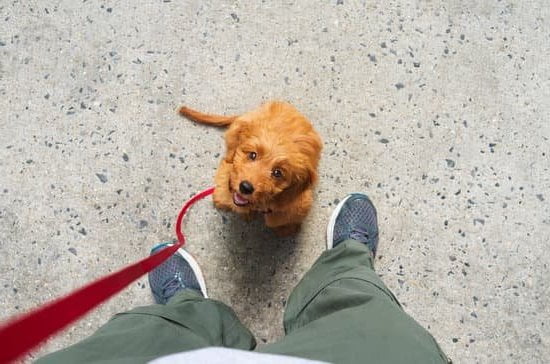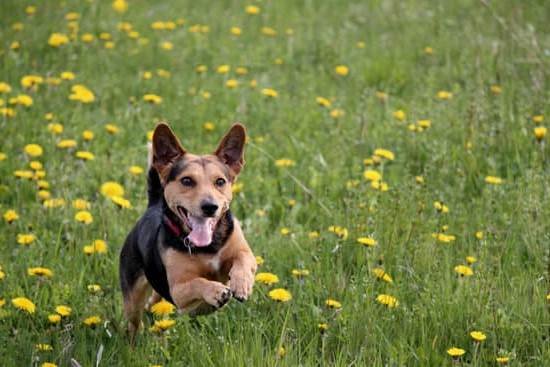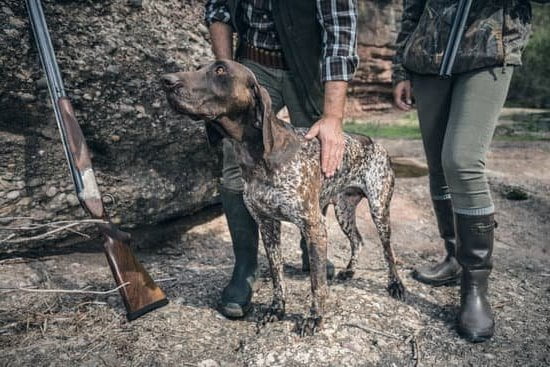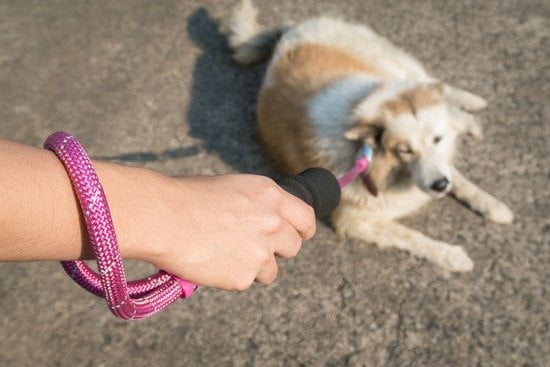Are you wondering how to train a small dog on a leash? Leash training is an essential skill for any pet owner, especially when it comes to small dogs. In this article, we will explore the importance of leash training for small dogs and provide tips and techniques to help you successfully train your furry friend.
Leash training is crucial for the safety and well-being of small dogs. It allows them to explore the world while keeping them under control and preventing any potential accidents. Additionally, leash training can also help improve your bond with your small dog and make outdoor activities more enjoyable for both of you.
In this section, we will delve into the various aspects of leash training for small dogs, including selecting the right equipment, understanding your dog’s behavior, basic obedience training, positive reinforcement techniques, desensitization methods, walking exercises, troubleshooting common problems, and the importance of consistency and patience in training. By the end of this article, you will have all the information you need to effectively train your small dog on a leash.
Choosing the Right Leash and Collar for Your Small Dog
When it comes to leash training a small dog, choosing the right leash and collar is crucial for their comfort and safety. Small dogs have delicate necks, so it’s important to find a collar that fits well without causing any discomfort or injury. The first step in finding the best fit is to measure your dog’s neck to ensure that the collar isn’t too tight or too loose.
Additionally, it’s important to consider the material of the collar – leather, nylon, or fabric are all common options. The key is to find a comfortable and durable material that won’t irritate your small dog’s skin.
In addition to choosing the right collar, selecting the appropriate leash is just as important. For small dogs, a lightweight leash is typically best as it won’t weigh them down or cause strain on their neck.
Retractable leashes can be convenient for allowing your small dog more freedom while still maintaining control, but they should be used cautiously as they can encourage pulling behavior if not used properly. A standard 4-6 foot leash may also be suitable for walking exercises and basic obedience training.
When fitting your small dog with a collar and leash, it’s essential to ensure that they are secure but not too tight. You should be able to comfortably fit two fingers between the collar and your dog’s neck.
Always monitor your small dog when using a new collar or leash for any signs of discomfort or irritation. By taking the time to find the right fit for both the collar and leash, you can set your small dog up for success in their leash training journey.
Understanding how to train a small dog on a leash entails finding an appropriate fit for both their collar and their leash. Comfort is essential in making sure that these instruments do not cause them any pain nor distress while wearing them during walks or exercises such as basic obedience training and desensitization tactics.
There are specific techniques and methods one can use together with trial-and-error until finding out what works better for you and ensures there will be no injuries caused by these utensils at any given time.
Understanding Your Small Dog’s Behavior
Small dogs, just like their larger counterparts, can present unique challenges when it comes to leash training. Understanding your small dog’s behavior is crucial in identifying and addressing common issues that may arise during the training process. One of the most important aspects of understanding your small dog’s behavior is recognizing that they may have different motivations and stress triggers compared to larger breeds.
One common challenge when leash training a small dog is their tendency to pull on the leash. Small dogs are known for their high energy levels and enthusiasm, which can result in them pulling and tugging during walks.
This behavior can be not only frustrating for pet owners but also dangerous if not corrected. Understanding why your small dog pulls on the leash, whether it’s due to excitement, anxiety, or a desire to explore, is key in addressing this issue effectively.
Another challenge that small dog owners may encounter is leash reactivity. This behavior typically involves excessive barking, lunging, or growling towards other dogs or people while on a walk. It’s important to identify the trigger for this reaction and work on desensitizing your small dog to reduce their stress and anxiety in these situations.
In order to address these common challenges when leash training a small dog, it’s essential to use positive reinforcement techniques and remain patient and consistent throughout the training process. By understanding your small dog’s behavior and motivations, you can tailor your training approach to effectively teach them proper leash etiquette.
| Common Challenges | Training Approach |
|---|---|
| Pulling on the Leash | Use positive reinforcement techniques such as treats and praise to encourage loose leash walking |
| Leash Reactivity | Identify triggers and desensitize your small dog through gradual exposure |
Basic Obedience Training
Training a small dog on a leash requires patience and consistency. One of the key aspects of leash training is teaching your small dog to respond to commands effectively. This not only helps keep them safe while out for walks but also creates a stronger bond between you and your pet. Here are some helpful tips on how to train a small dog on a leash to respond to commands.
First, start with simple commands such as “sit,” “stay,” and “heel.” Use positive reinforcement techniques such as treats and praise to reward your small dog when they successfully follow these commands on the leash. Remember to be patient, as it may take some time for your pet to understand what is expected of them.
It’s also important to practice these commands in various environments and situations, gradually increasing the level of distractions. This will help your small dog learn to focus on you and follow your commands regardless of the surrounding stimuli. Consistency is key when it comes to obedience training on a leash, so be sure to reinforce these commands regularly during walks and training sessions at home.
Finally, seek professional help if you encounter any difficulties or challenges in training your small dog on a leash. A professional dog trainer can provide personalized guidance based on your pet’s specific needs and behavior, ultimately making the leash training process more effective for both you and your furry companion.
| Tips for Training | Benefits |
|---|---|
| Use positive reinforcement techniques such as treats and praise | Creates a stronger bond between you and your pet |
| Practice commands in various environments and situations | Helps your small dog learn to focus regardless of distractions |
| Seek professional help if encountering difficulties | Personalized guidance can make training more effective |
Positive Reinforcement Techniques
When it comes to leash training a small dog, positive reinforcement techniques can be highly effective in encouraging good behavior. Using treats and praise can help your small dog associate the leash with positive experiences and make the training process more enjoyable for both of you.
Here are some techniques for using positive reinforcement to encourage good leash behavior in your small dog:
- Use high-value treats: Choose small, tasty treats that your small dog loves as a reward for walking nicely on the leash. These treats should be something special that they don’t get at any other time, so they will be motivated to earn them during training sessions.
- Praise and encouragement: In addition to treats, verbal praise and enthusiastic encouragement can also go a long way in reinforcing good leash behavior. Use a cheerful tone of voice and plenty of “good boy” or “good girl” praises to let your small dog know when they are doing well on the leash.
- Clicker training: Consider using a clicker as part of your positive reinforcement training. The clicker can be paired with treats to give your small dog immediate feedback when they exhibit the desired behavior, making it easier for them to understand what you are asking of them.
By consistently using these positive reinforcement techniques, you can effectively teach your small dog how to walk nicely on a leash while building a strong bond based on trust and cooperation. Remember to be patient and consistent in your training efforts, as every small step forward is an accomplishment in the journey of teaching your furry friend how to walk politely on a leash.
Desensitization
Gradual Introduction
One effective desensitization technique is to gradually introduce the leash and collar to your small dog. Start by simply placing the collar near your dog, allowing them to sniff and investigate it at their own pace. Once they seem comfortable with the collar, you can then move on to placing it around their neck for short periods of time while giving them treats and praise.
Positive Reinforcement
During the desensitization process, it’s important to use positive reinforcement techniques such as treats and praise. Whenever your small dog shows calm or relaxed behavior around the leash and collar, be sure to reward them with their favorite treats or verbal praise. This will help create a positive association with these items.
Patience and Consistency
Desensitization requires patience and consistency. It’s important not to rush this process or force your small dog to accept the leash and collar too quickly. Every dog will progress at their own pace, so be sure to take things slow and remain patient throughout the desensitization process.
By using these gradual introduction methods, positive reinforcement techniques, patience, and consistency, you can help your small dog become more comfortable with the leash and collar over time. By addressing any fear or anxiety related to these items early on, you can set a solid foundation for successful leash training moving forward.
Walking Exercises
Introduction
Walking exercises are an essential part of leash training for small dogs. It not only provides physical exercise but also helps in reinforcing obedience and good behavior. In this section, we will discuss the importance of practicing loose leash walking and the proper walking etiquette for small dogs.
Benefits of Loose Leash Walking
Practicing loose leash walking is important for small dogs as it teaches them to walk calmly without pulling or tugging on the leash. This not only makes the walking experience more enjoyable for the owner but also prevents any potential injuries to the dog’s neck or throat. Furthermore, it also promotes better communication between the dog and its owner, fostering a stronger bond.
Proper Walking Etiquette for Small Dogs
When it comes to proper walking etiquette for small dogs, it is important to ensure that they walk beside or slightly behind their owner. Additionally, small dogs should be taught to focus on their owner and follow basic commands such as “sit” or “stay” while on a walk.
Teaching them these behaviors can prevent them from getting overly excited and potentially becoming a safety hazard to themselves or others. Using positive reinforcement techniques can help encourage these good behaviors while out on a walk, making it a positive experience for both you and your furry companion.
Troubleshooting Common Leash Training Problems
When it comes to leash training a small dog, there are common problems that may arise. These issues can make the training process frustrating for both the owner and the dog. However, with patience and the right approach, these challenges can be overcome. Below are some common leash training problems for small dogs and how to address them:
- Pulling: Small dogs have a reputation for being excited and prone to pulling on the leash. To address this issue, it’s important to teach your dog proper leash etiquette by using positive reinforcement techniques. Whenever your dog walks calmly without pulling, reward them with treats and praise. Additionally, using a harness instead of a collar can help minimize pulling as it reduces strain on your small dog’s neck.
- Distractions: Small dogs can easily get distracted during walks, whether it’s by other animals, people, or new surroundings. To address this challenge, start by practicing in low-distraction environments before gradually increasing the level of distractions. When your dog becomes distracted, use their favorite treats or toys to redirect their attention back to you. With consistent practice, your small dog will learn to focus on you even in challenging situations.
- Fear and Anxiety: Some small dogs may exhibit fear or anxiety when introduced to a leash and collar for the first time. To address this issue, start by desensitizing your dog to the leash and collar in a positive and gradual manner. Allow your dog to become familiar with the equipment at their own pace, while providing lots of praise and rewards for any signs of comfort or progress.
By understanding these common leash training problems and implementing the appropriate solutions, you can effectively train your small dog to walk on a leash with confidence and ease. Remember that consistency and patience are key factors in overcoming these challenges – with dedication and perseverance, you’ll see improvement in your small dog’s leash behavior over time.
Overall, understanding how to train a small dog on a leash requires time, effort, and understanding of your pet’s behavior patterns. By implementing effective training techniques such as positive reinforcement and desensitization, addressing common problems like pulling and distractions becomes more manageable for both you and your furry companion.
Consistency and Patience
In conclusion, training a small dog on a leash requires dedication, patience, and consistency. It is essential to understand the importance of ongoing training and perseverance in order to achieve successful results. Small dogs may present unique challenges when it comes to leash training, but with the right techniques and approach, it is possible to teach them to walk calmly and obediently on a leash.
One of the key aspects of successfully training a small dog on a leash is understanding their behavior and using positive reinforcement techniques. By consistently using treats and praise to encourage good leash behavior, small dogs can learn to respond to commands and walk politely on a leash. Consistency in applying these techniques is crucial for long-term success.
It’s important for small dog owners to remember that desensitization plays a significant role in helping their pets become comfortable with wearing a collar and being on a leash. By gradually introducing them to these accessories, fear and anxiety can be minimized.
With patience and perseverance, along with the techniques outlined above, small dog owners can effectively train their pets on a leash. Understanding the importance of ongoing training will ultimately lead to enjoyable walks for both the owner and their furry companion.
Frequently Asked Questions
How Do I Get My Small Dog to Stop Pulling on the Leash?
Getting your small dog to stop pulling on the leash requires consistent training and positive reinforcement. Start by teaching them basic obedience commands like “heel” and reward them when they walk calmly beside you.
What Is the Fastest Way to Leash Train a Dog?
The fastest way to leash train a dog is through positive reinforcement and consistency. Use treats or toys to encourage good leash behavior, and be patient as it may take time for your dog to learn.
How Do You Train a Dog to Walk on a Leash Without Pulling?
To train a dog to walk on a leash without pulling, start by using a front-clip harness to discourage pulling. Additionally, teach your dog basic commands like “heel” and practice walking in low-distraction environments before progressing to busier areas.

Welcome to the blog! I am a professional dog trainer and have been working with dogs for many years. In this blog, I will be discussing various topics related to dog training, including tips, tricks, and advice. I hope you find this information helpful and informative. Thanks for reading!





